The Little Gem Magnolia offers many benefits. It resists pests, diseases, and deer. It can withstand salt and pollution. This tree stays evergreen and blooms. It’s shorter than most magnolias. Leaves are dark and glossy. Growth is moderate. The fragrance is delightful. However, there are a few drawbacks. It’s sensitive to pollution. Yet, overall, it’s a wonderful addition to any garden. It shares qualities with its larger cousin but in a smaller size. It’s perfect for smaller landscapes. With its compact size, it fits well in home gardens. This tree thrives in certain conditions. It prefers moist, well-drained soil. It’s moderately tolerant to salt. However, it doesn’t like extreme soil conditions. Overall, it’s a charming and practical choice for gardens.
In this blog post, we will explore the Little Gem Magnolia Tree Pros And Cons, so that you can make an informed decision about whether it is the right fit for your landscape.
| Pros | Cons |
|---|---|
| Dwarf Size | Expensive Cost |
| Evergreen | Slow growth |
| Fragrant Blooms | Soil requirements |
| Low maintenance | Size limitation |
| Tolerant to Salt, Pollution, and Deer | Fragility |
| Narrow growth habit | |
| Pest and disease resistant |
Shop Little Gem Magnolia Trees –
Magnolia grandiflora – 1 Gallon or 5 Gallon Container
Magnolia grandiflora – 3 Gallon or 5 Gallon Container( Recommended)
Pro: Dwarf Size
Even though it’s called dwarf, this cute evergreen can actually grow to over 25 feet tall. It’s perfect for creating some space between tall city houses. You know, it’s got those classic big white flowers you’d expect from a larger magnolia. And hey, it’s not too pricey either, ranging from around 40 bucks to just over a grand. These trees produce these lovely big, fragrant creamy white flowers, about 8 inches wide.
They’ve got these nice oblong leaves, too. Little Gem Magnolias, they’re kinda small compared to other Southern magnolias, reaching around 15 to 20 feet in height and 8 to 10 feet in width. They grow pretty fast and stay green even in fall. And oh, did I mention they’re compact? Yep, they’re like the mini version of Southern Magnolias. Perfect for your landscape, standing tall at 20 to 25 feet and spreading out 8 to 10 feet wide. So, if you’re looking for a charming, fragrant addition to your garden, Little Gem Magnolia might just be your go-to!

Pro: Evergreen
The little gem magnolia tree, evergreen and versatile, enchants year-round. Its delightful blooms, emitting a sweet fragrance, ensure a captivating curb appeal. This compact evergreen, perfect for small gardens, boasts dense foliage. In just two to three years, it blossoms generously with fragrant creamy-white flowers, each 8 inches wide. Though labeled dwarf, it may exceed 25 feet tall at maturity.
This salt-tolerant tree thrives in moist, well-drained loamy soil. Despite its small size, it retains all the magnolia’s classic features. With dark green leaves and large, fragrant flowers, it’s a standout. The ornate flowers, cream-colored and sizable, outlast those of its cousins. Whether for landscaping or ornamental purposes, the little gem magnolia shines.

Pro: Fragrant Blooms
Little Gem magnolia trees bloom with big, fragrant, creamy white flowers. These flowers are not just pretty; they also smell amazing. They’re like the larger Southern Magnolia’s blooms, but smaller. Their scent is like a mix of lemons and flowers. Little Gem Magnolias bloom from spring to summer. You can grow them as trees or large shrubs. They have a low canopy and stay green all year.
The flowers are large, saucer-shaped, and about 8 inches wide. They’re creamy white and smell sweet. Little Gem Magnolias are perfect for privacy screens or corners. They have glossy, dark green leaves. These leaves are oval-shaped and look beautiful. They measure about 8 inches and have a sweet scent. The leaves are green on top and bronze-brown underneath.
They create a lovely contrast. Little Gem Magnolias attract bees and other pollinators. Bees love the fragrant white flowers. The flowers give way to fruiting clusters later on. These clusters mature in late summer. Little Gem Magnolias are naturally small trees or large shrubs. They’re ideal for smaller spaces in your garden. You can find them in different sizes and containers. Some are even available for pre-order. Little Gem Magnolias are easy to care for. They produce beautiful blooms year after year. You’ll enjoy their fragrance and beauty in your garden.
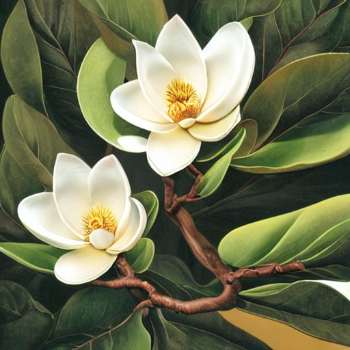
Pro: Low maintenance
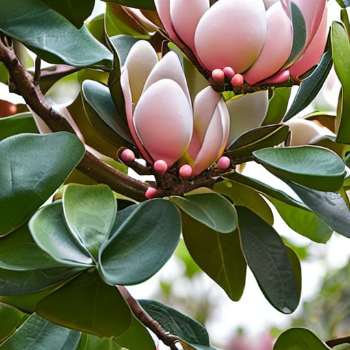
Magnolia trees: low-maintenance, clean, evergreen, hardy nature, long blooming period. The foliage, shedding leaves in spring, considered messy by some. Best planted in well-drained, acidic soil, full sun, or partial shade. Low-maintenance, minimal pruning, challenging with extensive growth.
Avoid shade, late winter winds, susceptible to powdery mildew. Roots grow horizontally, close to soil surface, may damage structures. Lifespan: 80-120 years, acidic, well-drained soil preferred. In winter, smaller stature, beautiful white flowers.
Plant away from house foundation, not on corners. Magnolia Little Gem: compact, star-shaped flowers, ideal for small gardens. Sweetbay Magnolia: less messy, lemony scent, perfect for yards. ‘Little Gem’: dwarf, slow-growing, compact, upright, multi-stemmed.
Tolerant to Salt, Pollution, and Deer
The Little Gem Magnolia tree sticks out as a hard and adaptable plant that can continue to exist in lots of hard environments because to its tolerance excellent. This tree is a useful addition to landscapes in coastal locations, urban settings, and locations with huge deer populations due to the fact to its first rate resilience to salt, pollutants, and deer.
The salt tolerance of the Little Gem Magnolia could be very beneficial for individuals who stay close to the seashore or in places with salty soil. The exposure to salt spray and salt-encumbered air, which can be dangerous to many other plant species, is not a trouble for this tree. Its particular leaf structure, which facilitates reduce salt absorption and consequent harm, is credited with assisting it flourish in those occasions. This makes the Little Gem Magnolia a first-rate option for coastal gardens in view that it is able to provide splendor and foliage while enduring the problems provided by environment with quite a few salt.
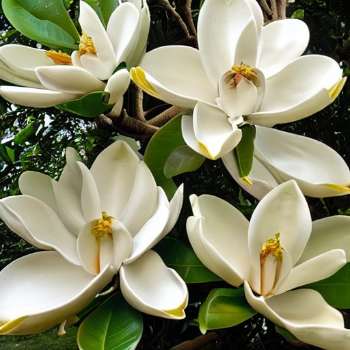
The Little Gem Magnolia additionally indicates tolerance for the pollution this is regularly seen in metropolitan environments. Plant fitness and boom may additionally go through because of air pollution, along with that from motor vehicle emissions and commercial contaminants. However, because of this tree’s hardiness, it can tolerate a number of the pollution or even clear out them, which enables to enhance the air first-rate in metropolitan regions. The Little Gem Magnolia is an brilliant option for urban parks, streetscapes, and residential regions due to the fact that it can assist lessen the damaging effects of pollutants while including aesthetic cost.
The Little Gem Magnolia’s resilience to deer surfing is some other noteworthy first-rate. Due to the fact that deer frequently consume a number of plant sorts, deer populations might also provide a considerable issue for gardeners and landscapers. However, deer typically dislike the leaves of Little Gem Magnolias, which lessens the possibility of serious damage from browsing. The tree is a applicable opportunity for landscapes with excessive deer populations because to its resilience to deer grazing, which allows it to flourish and maintain its splendor without chronic safety or deterrent efforts.
Pro: Narrow boom habit
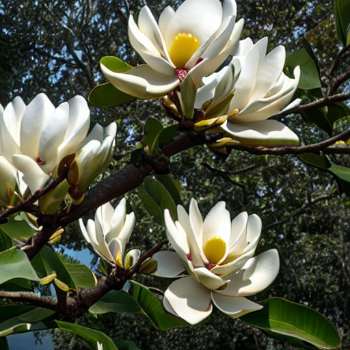
One feature that distinguishes the Little Gem Magnolia tree from different magnolia sorts is its slender boom habit. This tree’s columnar shape and thin, upright boom fashion make it a incredible option for small-area landscapes or conditions wherein a vertical feature is sought.
The Little Gem Magnolia’s slim growth habit is mainly beneficial in tiny gardens or urban environments while space is at a top class. Due to its small length, the tree may be used as an accent tree in small places or to in shape easily in planting beds which can be too slender or along fences. It is a superb alternative for people seeking to create a vertical focal point with out giving up vital floor area due to its upright growing addiction, which facilitates optimize vertical area.
Additionally, the Little Gem Magnolia’s tendency of columnar growth lends the landscape an architectural individual. A feeling of verticality is created through its slender form, which additionally gives peak and shape, intrigue, and aesthetic appeal. In lawn design, this vertical issue may be particularly useful for the reason that it is able to be utilized to offer evaluation, stability, and a feeling of percentage to the general composition. Due to its slim boom dependancy, the tree may be strategically positioned inside the panorama and used as a stand-on my own function or as a background to other plant life.
The Little Gem Magnolia is a splendid alternative for formal or symmetrical landscape designs because to its compact and columnar appearance. Its tidy and upright look makes it a terrific match for formal gardens, which like clear lines and well-prepared layouts. The tree’s slim growth pattern can be used to provide symmetry and balance, so one can enhance the panorama’s universal visual appeal.
Pro: Pest and disease resistant
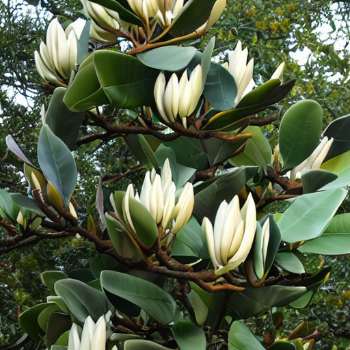
One of the many specific traits of the Little Gem Magnolia tree is its resilience to pests and illnesses. The Little Gem is a low-maintenance tree because it is less prone to pests and ailments than different magnolia bushes.
Scales, which might be tiny insects that devour plant sap, are one of the most widely wide-spread pests that harm magnolia plants. The Little Gem Magnolia is tolerant of them, although they will reason leaves to show yellow and fall off. In addition, magnolia bushes are at risk of fungal diseases like blight, canker, and ailments that cause black, brown, or white patches on leaves, but the Little Gem Magnolia is even immune to these illnesses.
Another disease which could kill off branches on magnolia trees is verticillium wilt. The Little Gem Magnolia, however, isn’t at risk of this contamination. Also proof against deer nibbling, the tree is a amazing preference for landscapes in regions with massive deer populations.
The Little Gem Magnolia is likewise salt and pollution resistant, making it a super tree for city settings. It’s the precise plant for supplying splendor and coloration for your environment way to its evergreen leaves and aromatic white blossoms.
The Little Gem Magnolia would not take plenty care beyond recurring watering and trimming. The tree must be planted in properly-drained soil, however, and ought to get enough moisture at some point of the setting up segment.
Con: Expensive Cost
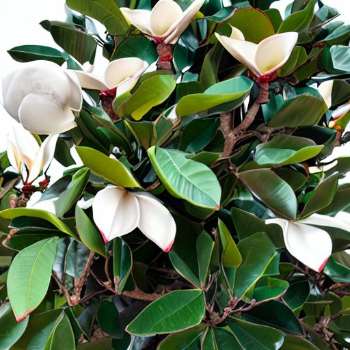
The rate of the Little Gem magnolia tree is one in all its predominant downsides. Due to their recognition and excessive call for, Little Gem magnolia bushes are often more highly-priced than other smaller tree kinds. They may, but, increase the fee of your property as an funding.
Depending on the tree’s length and wherein you buy it, the price of a Little Gem Magnolia tree may range. The Tree Center, Arbor Day Foundation, Moon Valley Nurseries, My Perfect Plants, Fossil Creek Tree Farm, Home Depot, Lowe’s, Florida Nursery Mart, Plant Me Green, and Treeland are just a few respected on line nurseries and gardening shops that promote this tree.
The Little Gem Magnolia is to be had at The Tree Center in 3 sizes: 2-gallon for $79.Ninety five, 7-gallon for $129.Ninety five, and a couple of-3 feet for $109.Ninety five, that is now eleven% off. The Little Gem Magnolia is available from Arbor Day Foundation in three-gallon and seven-gallon packing containers, with member financial savings, for $69.Ninety nine and $114.99, respectively. Although My Perfect Plants has a 1-2 ft tall plant for $37.00 and a 5-6 ft tall tree for $152.96 on sale, Moon Valley Nursery sells a significantly bigger Little Gem Magnolia tree in a sixty five-gallon pot for $a hundred and ten,000.
For the installation of the Little Gem Magnolia, Fossil Creek Tree Farm prices $50 per tree for a fifteen-gallon container, $175 in step with tree for a 30-45 gallon field, and $249.Ninety nine for a sixty five-gallon field with installation already covered. A three-gallon box charges $54.98, a #three field fees $one hundred fifteen.38, and a #1 box costs $fifty five.82 at Home Depot. A 10.25-gallon field is available at Lowe’s for $sixty one.98.
Con: Slow boom
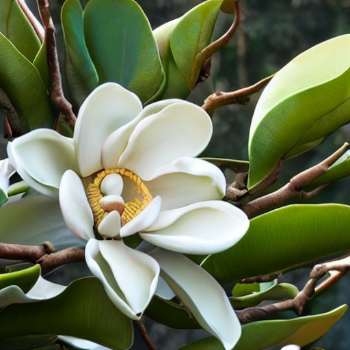
Little Gem magnolia bushes have a slower increase fee compared to different varieties of magnolias, which won’t be the desired preference for individuals looking for speedy enlargement of their landscapes. It is important to observe this characteristic when considering those bushes for planting, as they are able to soak up to 20 years to reach their most height.
On common, Little Gem magnolia bushes develop much less than 12 inches in top in line with yr, in the long run maturing to a peak of 20 to twenty-five ft with a spread of eight to 12 ft. Planting more than one Little Gem Magnolia trees can create a dense hedge, presenting both aesthetic appeal and privacy to the panorama.
Despite their slower boom, Little Gem magnolia bushes make a wonderful addition to any panorama. They are regularly chosen as decorative bushes because of their lovely creamy white blossoms that emit a satisfying perfume in the course of the summer months. These blossoms create a lovely evaluation against the tree’s darkish inexperienced leaves, enhancing the overall visible effect.
Proper care is essential for the improvement and fitness of Little Gem magnolia bushes. Regular watering is required to preserve ok soil moisture, however it’s miles vital to make certain right drainage to prevent waterlogging. Using nicely-draining soil or amending the soil with natural count can enhance drainage and create an premiere developing environment for the tree.
Fertilization is any other factor of care to recollect. Applying a slow-launch balanced fertilizer in the course of the developing season in spring can provide the important vitamins for healthful increase. It is essential to observe the commands provided via the manufacturer and keep away from over-fertilization, as this may cause bad effects for the tree’s increase and standard fitness.
When planting a Little Gem magnolia tree, it’s miles vital to remember the nearby weather situations and avoid prolonged intervals of drought or excessive rainfall. Extreme weather situations can impede the tree’s growth and improvement. Providing enough irrigation at some point of dry spells and making sure proper drainage in the course of wet intervals are essential for keeping the tree’s health and promoting constant boom.
Con: Soil necessities
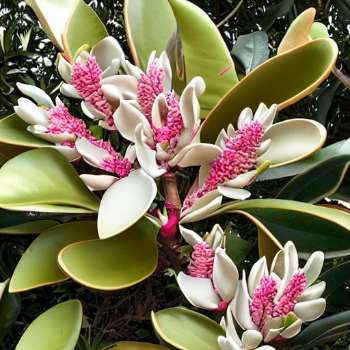
Little Gem magnolia trees want quite acidic, well-tired soils, which may need greater soil amendments and maintenance. They can not live on in damp soils, and too much moisture might also motive root rot.
Acidic, loamy, moist, sandy, well-drained, and clay soils, amongst others, might also all guide the boom of this tree. It is essential to consider that the tree can bear occasional floods however enjoys wet soil, specifically whilst just planted. The Little Gem Magnolia Tree can face up to droughts, however most effective to a modest quantity.
To offer the tree the vitamins it needs, it is counseled to fill the hollow where the tree could be planted with a aggregate of composted cow dung and either topsoil or natural peat humus. Mulch around the tree’s base can also useful resource in soil temperature manage and moisture retention.
Your Little Gem Magnolia Tree’s health and development rely upon everyday fertilization. It’s most suitable to apply a sluggish-release fertilizer like 10-10-10 or 8-8-eight that has a balanced composition and observe it inside the spring at some stage in the growth season.
The Little Gem Magnolia Tree can also develop in a variety of soil kinds, including sand, loam, and clay, however it loves a pH that is really acidic. Also, since the tree handiest has a modest tolerance for salt, it’s far advised in opposition to developing it in places with excessive salt concentrations.
Con: Size limitation
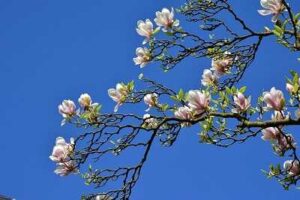
While being smaller, the Little Gem magnolia tree may additionally nevertheless be too huge for certain small gardens or landscapes. When planting a Little Gem magnolia tree, it is crucial to take the to be had location into account.
This tree generally matures to a top of 15 to 20 ft and a variety of seven to 10 toes. It is a tree that grows at a slight tempo, among 12 and 24 inches each year, depending on nearby circumstances.
The Little Gem Magnolia tree, Magnolia grandiflora, is generally smaller in length than the same old Southern Magnolia, Magnolia grandiflora, which can reach heights of as much as eighty toes and spreads out to a range of 30 to 40 feet, according to some of sources such as arborday.Org, thetreecenter.Com, trees.Com, gardenia.Internet, and rapid-developing-trees.Com. The Little Gem Magnolia also has severa stems that develop collectively to provide it a furry appearance, making it a multi-stem shrub.
The soil conditions of the Little Gem Magnolia tree might consist of clay, sand, loam, and chalk. It is good for many regions of the US considering it is hardy in USDA zones 7 through 10.
When planning to plant a Little Gem Magnolia on your yard, it’s crucial to take into account the tree’s eventual mature size and provide adequate room for it to increase. As a widespread tenet, plant the tree as a minimum 10-15 toes from any structures or different trees to present it space to grow to its maximum top.
Con: Fragility
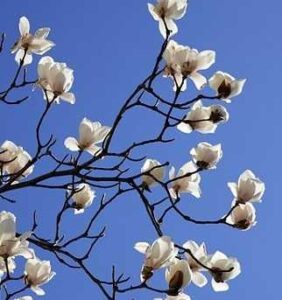
Little Gem magnolia timber, also referred to as Southern Magnolias, are regarded for his or her sturdiness and resilience. However, like every other plant, they could nonetheless be at risk of damage caused by excessive weather situations or inadequate care. One of the potential dangers for these timber is frost damage, which can lead to untimely browning and losing of leaves.
To guard Little Gem magnolia bushes from frost harm, it’s far essential to take preventive measures. During durations of frost, presenting transient safe haven or overlaying the tree can help shield it from the cold. By imposing these precautions, gardeners can limit the chance of frost-associated damage to the tree.
Apart from frost harm, those magnolia trees might also face challenges posed with the aid of other environmental factors, along with drought or excessive heat. Adequate watering practices are important, particularly during hot and dry intervals, to ensure the tree remains hydrated and wholesome. Regular irrigation and the usage of mulch to hold soil moisture may be useful in retaining premier situations for the tree’s boom.
While Little Gem magnolias are generally taken into consideration low-upkeep timber, it’s miles crucial to observe that they’re not absolutely immune to pests and illnesses. Although they have a natural resistance, it is nonetheless vital to monitor the tree for common troubles like scale insects or fungal infections. Early detection and suitable treatment, if important, can save you the unfold of pests or illnesses and assist hold the tree’s typical properly-being.
When planting a Little Gem magnolia tree, it is vital to remember its precise soil requirements. These timber thrive in nicely-draining soil that is wealthy in natural count number. Adequate soil practise, which includes incorporating compost or organic amendments, can create a good developing environment. Additionally, keeping the soil pH in the favored variety (barely acidic to neutral) can guide the tree’s highest quality boom and fitness.
Furthermore, supplying sufficient space for the Little Gem magnolia to develop is essential. These bushes can reach a mature top of 20 to 30 ft, with a spread that extends several toes. It is crucial to choose a planting region that permits for proper boom with out causing structural damage or overcrowding.
Conclusion
Little Gem Magnolia Tree Pros And Cons, In conclusion, Little Gem Magnolia Tree has a number of attractive trends, inclusive of its diminutive stature, evergreen repute, aromatic blossoms, and resistance to salt, pollutants, and animals. Due of these features, it’s miles a popular option for individuals looking for a small, low-upkeep tree that could live to tell the tale in harsh environments. Its slender growing habit and tolerance to pests and illnesses most effective serve to increase its charm.
Cons, including the opportunity for a greater rate, sluggish growth, unique soil needs, size regulations, and fragility, need to no longer be left out whilst considering the benefits of the Little Gem Magnolia.
It is critical to evaluate those components for your unique requirements, tastes, and the kingdom of your landscape before deciding on whether to go together with the Little Gem Magnolia. The Little Gem Magnolia will be a great alternative when you have restricted space, need a smaller tree with 12 months-round foliage and fragrant blossoms, and your region presents difficulties like salt exposure, pollutants, or deer browsing.
You might also want to look at different options, but, if you have a limited price range, need a tree that grows quickly, have specific soil situations that may not meet the tree’s desires, or want a bigger tree.
In the end, it’s miles cautioned to go to local landscapers, arborists, or gardening specialists who can offer individualized steerage primarily based for your unique area and wishes. You can also make an knowledgeable choice that is in keeping with your vision and assures the lengthy-time period achievement and contentment with your selected tree via cautiously weighing the professionals and cons and getting professional advice.
Related Posts:
Chitalpa Tree Pros and Cons – 9 Facts You Need to Know
Hornbeam Tree Pros and Cons – 9 Facts You Need to Know
October Glory Maple Tree Pros And Cons – 9 Amazing Facts
Redbud Trees Pros and Cons – 12 Facts You Need to Know
River Birch Tree Pros and Cons – 16 Facts You Need to Know
Autumn Blaze Maple Pros And Cons (Is It a Good Tree?)
Reference:
https://olemiss.edu/depts/landscape/littlegemmagnolia.html
https://plants.ces.ncsu.edu/plants/magnolia-grandiflora-little-gem/
https://www.sjrstate.edu/treecampus_trees/magnolialittlegem
https://hort.ifas.ufl.edu/woody/Pages/maggralit/maggralit.shtml
